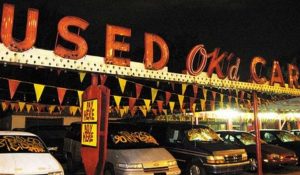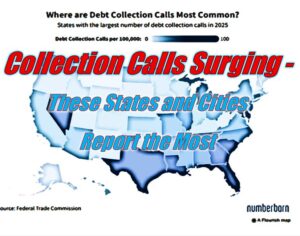 Detroit, MI, 30 September 2016 – The delinquency rate on subprime auto loans rose in August, and a credit rating agency that monitors the market said the trend likely will continue through the rest of 2016 as prices of used cars continue to fall.
Detroit, MI, 30 September 2016 – The delinquency rate on subprime auto loans rose in August, and a credit rating agency that monitors the market said the trend likely will continue through the rest of 2016 as prices of used cars continue to fall.
The delinquency rate has been trending upward throughout 2016 and now approaches peak levels seen in late 2008 and early 2009.
The percentage of people who qualified for subprime (FICO score of 600 or lower) auto loans, but are 60 days or more behind on payments, reached 4.86% in July, a 22% increase from a year earlier, according to Fitch Ratings. Auto delinquencies have risen every month since February.
Delinquencies among prime auto loan borrowers also rose, but remain at a manageable 0.41%, or 17% higher than a year ago.
These loans are packaged into bundles, which are sold to investors much like mortgages were packaged into bundles a decade ago before rising interest rates caused many of them to default. For those bundles of auto loans made up of subprime loans, the annualized net loss rate — the percentage of those loan bundles regarded as likely to default — was 8.89% in August, up 27% from August 2015, according to the Fitch research
For historical perspective, that loss rate peaked at 13% in January 2009. The 60-days-plus delinquency rate for subprime borrowers peaked at 5.04% in December 2008.
“The important thing is that those losses are trending higher on loans made between 2013 and 2015,” said Hylton Heard, senior director in Fitch’s U.S. asset-backed securities group.
Heard added that the broader risk to the U.S. economy is not as high today from rising auto loan delinquencies as it was during the trough of the Great Recession.
For example, unemployment nationally is 4.9% today compared with 8.9% in April 2009.
Most of the increased activity in subprime auto financing has come from newer and smaller finance companies that weren’t much of a presence during the last downturn.
The larger lenders, such as GM Financial, Ford Credit and Santander USA’s SDART platform, are better prepared to repossess vehicles and manage their exposure. Ford Credit is not among the more active lenders in the subprime market, Heard said.
But GM Financial and Santander accounted for only 54% of Fitch’s subprime index in August, down considerably from 84% in 2013.
Given current trends in the market, this trend of rising delinquencies is worth watching even if the new vehicle market remains strong.
The annual selling rate slipped below 17 million units in August, a sign that the market may have peaked.
“Used supply is rising fast driven by higher off-lease vehicles and trade-in volumes,” Fitch’s report found.
Inventory levels and incentive costs are rising.
“All these trends are negative and will pressure used vehicle values going forward and expect to see lower recoveries in auto-backed securities as a result,” the report said.
Source: Detroit Free Press











Facebook Comments